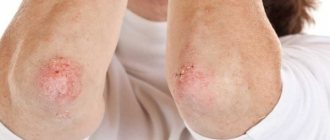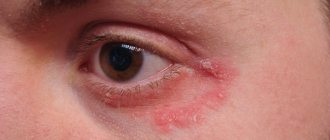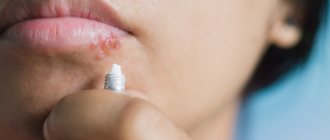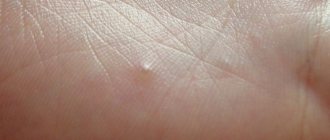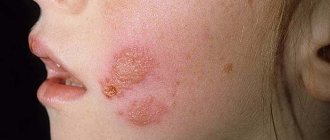Fast passage
Colds Influenza Infectious mononucleosis Labial herpes (herpes on the lips, cold sores on the lips) Herpes aphthous stomatitis Enteroviral stomatitis
Conditions that we used to call “colds” are most often affected by young children who do not yet have antibodies to respiratory viruses due to their early age. Over time, such antibodies developed in children who have recovered from the disease become their natural defense. The only acute respiratory viral infection that can be protected against through vaccination is influenza.
According to statistics, a child from birth to school can get ARVI more than 50 times (from 6-8 times a year). To date, more than 200 types of viruses that cause colds have been identified.
Most often, colds are observed in young children who have just started attending kindergarten (and in younger schoolchildren who have not attended kindergarten, have not been exposed to certain viruses and do not have immune protection). At this time, the usual complaints of parents at a pediatrician’s appointment are complaints about the caretakers’ oversight: “hypercooled,” “blown,” etc. In fact, the role of hypothermia and drafts in the development of colds is no longer seriously considered by science.
“Cold” (eng. - cold) is most often associated with a large-scale exchange of viruses between children in large children's groups.
Kindergartens, development centers, sports sections and even outdoor playgrounds are an excellent “collective reservoir” of infectious pathogens, and young children who are not yet accustomed to personal hygiene are super-spreaders (in many cases asymptomatic) of various respiratory viruses.
Cold
The first symptoms of a cold most often manifest themselves in the form of a sore and sore throat, nasal congestion, runny nose, sneezing, and cough. They usually occur 2–3 days after exposure to a virus (usually rhinovirus). The child may look lethargic, complain of increased fatigue, headaches and muscle pain, eat poorly or refuse to eat at all, and have a fever.
There is no specific treatment for colds (there are no proven effective drugs). To relieve headaches, muscle pain, and reduce high fever, the child can be given paracetamol or ibuprofen (children over 3 months).
Attention: aspirin should not be given to children! The dosage of such medications should be recommended by a doctor. Always follow the instructions for the drug if a quick consultation with a pediatrician is not possible.
There is no evidence that over-the-counter antihistamines and decongestants (decongestants) provide relief in children under 6 years of age. Moreover, medications containing decongestants can cause unwanted side effects in young children, ranging from increased excitability and hallucinations to abnormal heart rates, especially in infants.
It is very important that during illness the child drinks a lot (the best option is clean drinking water, but you can offer what he likes best - juices, compotes). Ventilate the room regularly, use a humidifier, and rinse the child's nose with saline solution. Children over 1 year of age can be given honey (no more than half a teaspoon); rubbing the chest with menthol ointments to relieve cough is not recommended for children under 2 years of age. Cough lozenges or tablets are recommended for children over 4 years of age; a small child may choke on them. Do not use multi-ingredient over-the-counter cold and cough medicines if your child is under 6 years of age. They are ineffective and can cause serious side effects. The use of such drugs is questionable in principle, but it is also important to understand that they may contain paracetamol and lead to an overdose if you have already given it to a child.
For colds in children, the use of alternative treatments (echinacea, etc.), increased doses of zinc or vitamin C has been proven ineffective. They do not relieve or reduce symptoms and can cause severe side effects in young children.
If your child's condition does not improve after 3 days from the onset of symptoms, make an appointment with your pediatrician. An examination is necessary to exclude other diseases (streptococcal infection, sinusitis, bronchitis, pneumonia) and prescribe adequate treatment.
See your doctor immediately if you have the following symptoms: cough with a lot of mucus, difficulty breathing, severe weakness, vomiting, dehydration, severe sore throat, fever of 39 °C or more, fever for 24 hours or longer, abdominal pain, pain in the ears, enlarged cervical lymph nodes.
Flu
An annual flu vaccination is the most reliable way to prevent severe disease and complications (otitis media, pneumonia) of the disease.
Vaccination of children against influenza is permitted from the age of six months.
Influenza is an acute respiratory viral disease caused by influenza viruses (usually types A or B; type C rarely causes serious symptoms). It is very easily transmitted from person to person, as confirmed by annual epidemics of the disease. People with the flu are most contagious in the 24 hours before symptoms appear and until symptoms subside (about a week).
The flu can be confused with a cold, but most often it is more severe. Symptoms - fever, chills, headache and muscle pain, runny nose, sore throat, cough, ear pain, loss of appetite, weakness, nausea, vomiting, diarrhea - appear approximately 2 days after exposure to the virus.
Most children with the flu recover at home, but if the disease is severe or has complications, they will need hospital treatment.
There are no effective cures for the flu; it is necessary to ensure that the child drinks plenty of fluids and is not dehydrated, gets plenty of rest and sleep; in general, the same tactics are followed here as with any ARVI. To relieve flu symptoms (reduce fever and reduce pain), you can use paracetamol or ibuprofen, rinse your nose with saline solution (for infants, saline solution is dripped into the nose, an aspirator is used to remove nasal discharge), and monitor the level of humidity in the room.
Important: antibiotics are not used to treat influenza and other acute respiratory viral infections.
Seek immediate medical attention if symptoms worsen, severe cough, difficulty breathing, fever in children under 3 months of age that lasts longer than 3 days, headache that does not go away with paracetamol or ibuprofen, stiff neck ( meningeal symptom).
More details
Flu
Infectious mononucleosis
Another disease of viral etiology with severe “cold” symptoms. The main causative agent of infectious mononucleosis is the Epstein-Barr virus (rarely other viruses). The infection spreads through saliva.
The disease is typical for adolescents and young adults (the so-called “kissing disease”), but young children can also become infected with infectious mononucleosis through contact with objects touched by an infected person (for example, through dishes). Most adults already have antibodies to IM because they have been exposed to the infection, so they are immune and do not get sick. In people with a weakened immune system due to concomitant pathologies or organ transplantation, MI can cause serious complications and other diseases (anemia, meningitis, encephalitis, myocarditis, etc.).
Symptoms of MI appear approximately 4–6 weeks after infection and may develop slowly and not all at the same time. They include severe sore throat, weakness, fatigue, fever, loss of appetite, enlarged neck and axillary lymph nodes, inflammation of the tonsils with white plaque, headache, muscle pain, skin rashes, abdominal pain, enlarged spleen or liver.
Most patients recover within 2–4 weeks of onset of symptoms, but some continue to experience symptoms of MI (eg, fatigue, enlarged lymph nodes, splenomegaly, hepatomegaly) for several weeks or even months.
The disease is diagnosed based on symptoms, their duration and specificity, as well as a physical examination. A blood test for antibodies to the Epstein-Barr virus and a general blood test to determine the level of leukocytes (prescribed if necessary) help confirm the diagnosis.
The symptoms of MI are quite unpleasant and cause significant discomfort to the patient, but the disease goes away on its own, without treatment or any consequences. Drinking plenty of fluids, rest and a healthy diet are recommended. To relieve symptoms (sore throat, headache, muscle pain, fever), it is recommended to use paracetamol or ibuprofen, or gargle with salt water. The addition of a secondary infection (streptococcal, for example) requires the use of antibacterial drugs. If the airways are severely narrowed and there is difficulty breathing, corticosteroids may be prescribed. To reduce the risk of rupture of the capsule of an enlarged spleen or liver, it is recommended to avoid exercise, heavy lifting, and contact sports for at least a month, or until the liver and spleen return to normal size.
Labial herpes (herpes on the lips, cold sores on the lips)
Labial herpes is a highly contagious and common viral infection caused by herpes simplex virus type 1 (less commonly type 2). Most people by the age of puberty already have this virus in their body and are its carriers, even without symptoms. After infection, the virus “sleeps” for some time in the nerve cells of the facial skin, and when activated, it causes a cold on the lips. Exacerbations may be caused by a viral infection or fever, hormonal changes, increased fatigue or stress, prolonged or intense exposure to sunlight, decreased immunity, or skin trauma.
The herpes simplex virus is transmitted through close contact (for example, by kissing), and is contagious even in the absence of obvious rashes on the lips. It appears as small, painful blisters (filled with clear fluid) on the lips (sometimes near the mouth or nose), which are usually grouped together, so the size of the lesion can range from a few millimeters to several centimeters.
After the bubbles burst, a crust forms in their place. Herpes on the lips usually goes away in 2-3 weeks, leaving no scars.
The disease occurs in several stages. The initial symptoms are tingling, itching or burning in the lips, then blisters appear, which merge and burst over time, leaving small wounds oozing liquid, after which a crust forms in their place. The first episode (manifestation) of the disease may be accompanied by fever, sore throat, sore muscles, headache, sore gums, and swollen lymph nodes. Recurrent infection is usually milder. Symptoms of cold sores most often occur in children between 1 and 5 years of age.
In the typical course of the disease, diagnosis does not require the use of specific studies; it is enough for the doctor to conduct an examination and find out the medical history. Diagnosis is usually based on symptoms.
There are no medications aimed at the cause of the disease. As a rule, herpes on the lips goes away on its own, without treatment. The healing process can be accelerated by using antiviral drugs in the form of ointments or tablets (acyclovir, valacyclovir, famciclovir). Reducing discomfort and pain is achieved through the use of local products containing alcohol (dries and accelerates healing), lidocaine or benzocaine (for very uncomfortable and painful conditions), antipyretic and analgesic drugs (for fever, severe pain). Cold compresses reduce redness and help remove crusts.
Before going outside, lips and face should be protected from the sun (with a product containing zinc oxide) and moisturizing balms should be used.
It is necessary to consult a doctor if herpes on the lips of a child does not disappear within 2 weeks, the disease is severe, there is irritation in the eyes during an exacerbation, relapses of herpes occur frequently, the child has a weakened immune system (due to some disease), there are diseases such as atopic dermatitis.
Prevention of herpes
Prevention of herpes simplex comes down to fulfilling the following conditions to avoid the spread of viral infection in children's groups:
- isolation of a patient with a viral disease from the team, even with a mild degree of the disease;
- elimination of chronic foci of infection;
- prophylactic use of antiviral ointments during an influenza epidemic by putting it in the nose 1-2 times a day;
- taking desensitizing drugs during an influenza epidemic (diphenhydramine, suprastin, pipolfen, diprazine, tavegil, diazolin, fenkarol, etc.) in the amount of a one-time pediatric dose per day; preventive course – 3-5 days;
- hardening the child, walks and games in the fresh air, gymnastics.
Herpes aphthous stomatitis
In children under 5 years of age, herpes simplex can affect the mouth, gums, and tongue (herpes aphthous stomatitis). In this condition, the mucous membrane of the oral cavity turns red, swells, the child begins to drool, small superficial ulcerations (aphthae) appear once within 1–2 days - single or grouped, the child becomes irritable, his gums swell, he complains of pain, loses appetite. The temperature usually rises (can reach 40°C) 1-2 days before the above symptoms.
After 3–14 days from the onset of symptoms, the child’s condition returns to normal, the temperature decreases, aphthae heal, inflammation and pain decrease, and appetite appears. With a more severe course, a repeated increase in temperature, aphthae may appear again, and the cervical and submandibular lymph nodes become enlarged. Recovery in this case may take up to 10 days. A complication of herpes aphthous stomatitis can be the transition of the disease to a recurrent form. The addition of a bacterial infection can cause otitis media, bronchitis or pneumonia.
Treatment of herpes aphthous stomatitis is aimed at eliminating symptoms (lowering temperature, pain relief with paracetamol or ibuprofen, drinking plenty of fluids, rest). Rinsing with aseptic solutions, the use of local anesthetics, antiviral ointments for treating aphthae (acyclovir), steroids in the form of gels and pastes are prescribed. Local treatment with lidocaine-based anesthetic ointments should not be administered to young children.
Etiology of herpes in children
There are several known ways of infection of the herpes simplex virus in children:
- air-drip;
- contact (through direct and indirect contact);
- transplacental;
- transfusion
The disease is contagious to persons not previously infected with the virus. The herpes simplex virus enters the body through the mouth, nasopharynx, eyes, genitals, infecting the skin or mucous membranes. A number of triggering factors have been identified that can provoke relapses: hypothermia, trauma to the oral mucosa, neuropsychic stress, overheating in the sun, taking medications, climate change. The herpes simplex virus is characterized by dermatoneurotropism, it has a pronounced affinity for the skin, mucous membranes and nervous tissue. It is in a free static non-productive state in the cells of the paravertebral sensory ganglion. Under the influence of a triggering factor, the virus from the centrifugal ganglion migrates along the axon of the peripheral nerve and causes active reproduction of the herpes simplex virus in epithelial cells. Reproduction and release of the herpes simplex virus from the ganglion occurs daily, but when it reaches the skin and mucous membranes, it is eliminated by defense mechanisms. Violation of the integrity of the mucous membranes and skin is important for the development of the disease.
There is no seasonality in the occurrence of the disease; children get sick equally often in winter, autumn, spring and even summer. An important role in the occurrence of relapse of herpes is played by the state of local and general immunity. The proposed mechanisms causing reactivation of the herpes simplex virus include provocations by specific physical or emotional factors, and seasonal periods of weakened immunity. Triggering factors can be acute respiratory infections, influenza, acute diseases of the gastrointestinal tract, neuroendocrine diseases, and emotional stress.
Herpes simplex manifests itself in two forms: acute herpetic stomatitis and chronic recurrent herpetic stomatitis.
Enteroviral stomatitis
Enteroviral stomatitis (hand-foot-mouth syndrome) is also characterized by the formation of painful aphthae on the tongue, under the tongue, on the mucous membranes of the cheeks and lips, on the soft palate and at the base of the gums. Accompanied by a blistering rash around the mouth, on the palms, back of the hands, feet, back of the thighs and buttocks of the child, fever, sore throat, headache, loss of appetite.
The causative agents of enteroviral stomatitis are the Coxsackie virus and other enteroviruses. The disease is very common among young children in the summer and is transmitted through contact with an infected person through the airborne or fecal-oral route: through dishes, hygiene items, bedding, toys.
The incubation period (from infection to the onset of symptoms) is 3 to 6 days. Fever is often the first sign of illness. Painful aphthae in the mouth appear 1–2 days after the onset of fever, then rashes are observed on the arms, legs and buttocks. Enteroviral stomatitis does not require special treatment, all signs and symptoms of the disease usually disappear after a week, and the child’s condition returns to normal.
Treatment of herpes:
- Anesthesia (egg white + 2% novocaine, anesthesin + peach oil, 0.5-1% solution of trimecaine or lidocaine, 4% solution of pyromecaine on glucose, 0.5-1% solution of novocaine with urotropine,).
- Enzymes (trypsin, lysozyme, chymotrypsin, chymopsin, pancreatin, deoxyribonuclease)
- Antiseptic treatment (0.5-1% hydrogen peroxide solution, 0.06% chlorhexedine solution). Parents' signature: Ivanova.
- Antiherpetic ointments (0.25% oxaline ointment, 1% florenal, 0.5% tebrofen, 1% riodoxol, as well as 3% gossypol liniment, 0.1% gossypol solution, 0.5% bonaftone ointment, 5% interferon ointment, ointments Zovirax and acyclovir). All this 5-6 times a day. This is done for 4-5 days.
- 6th day.
- leave as needed.
- No need.----
- we leave it too.
- keratoplatics (vitamin A in oil, vitamin E in oil, Shostakovsky balm, carotolin, rosehip oil and sea buckthorn oil, vitaon)

